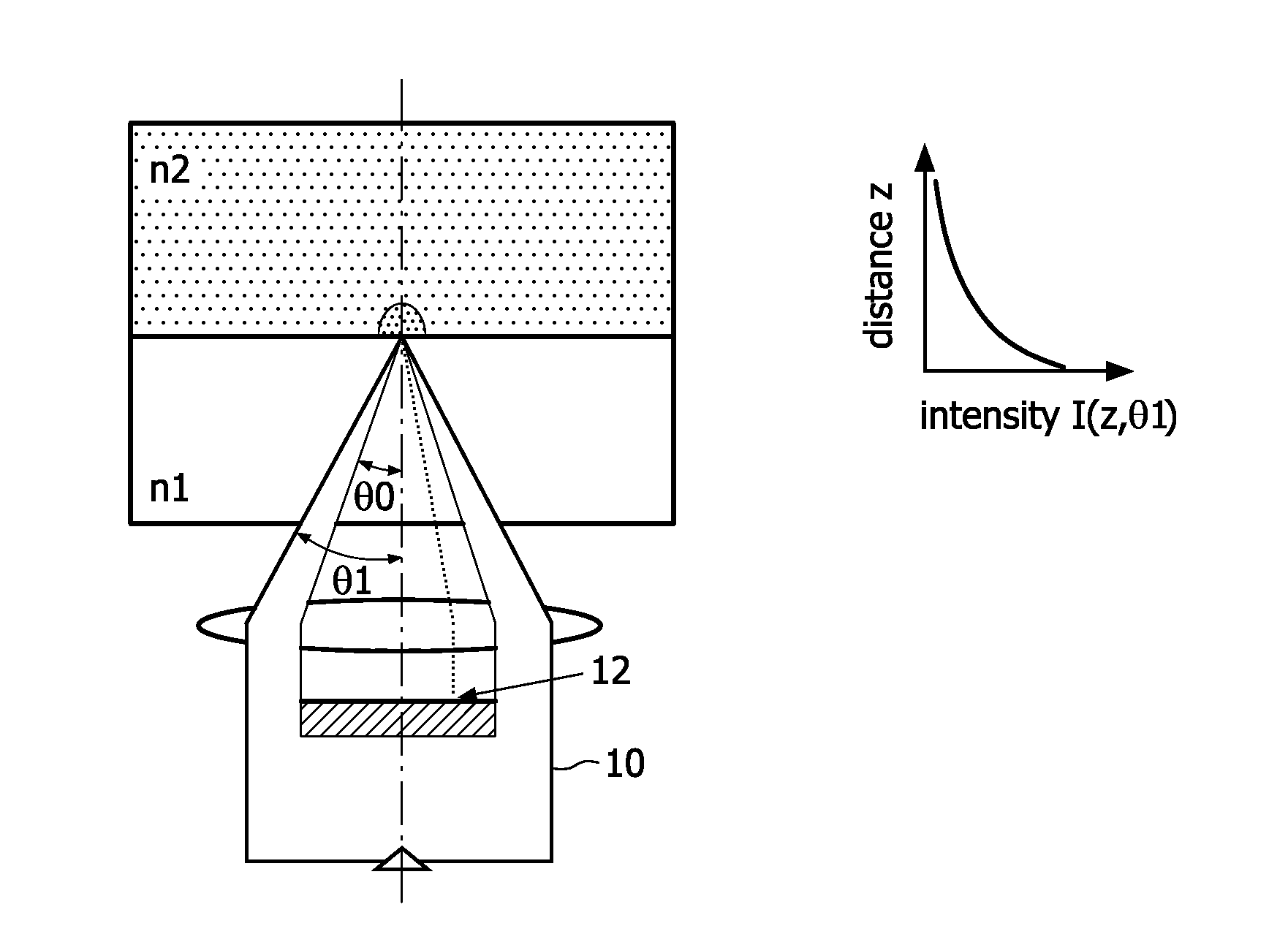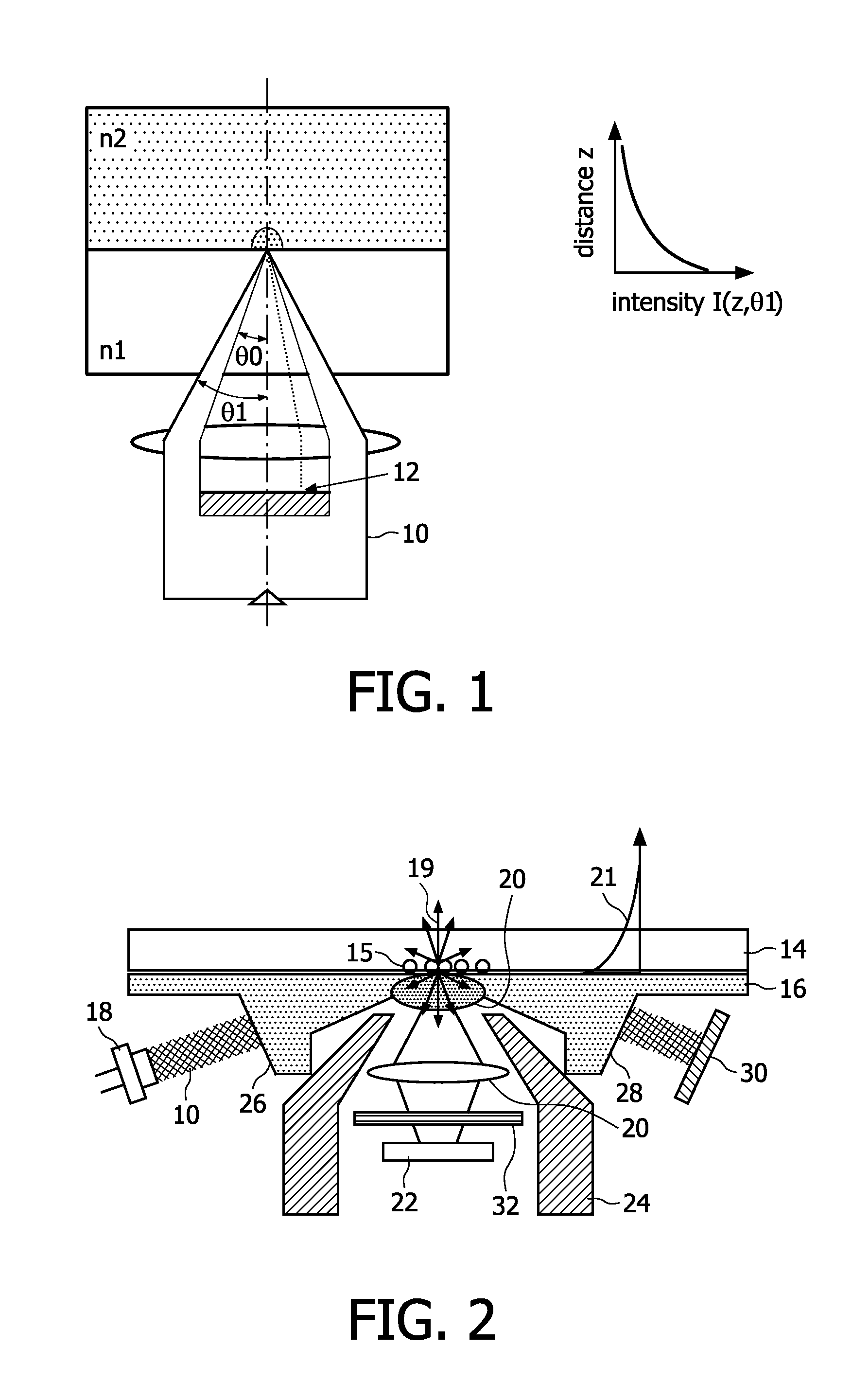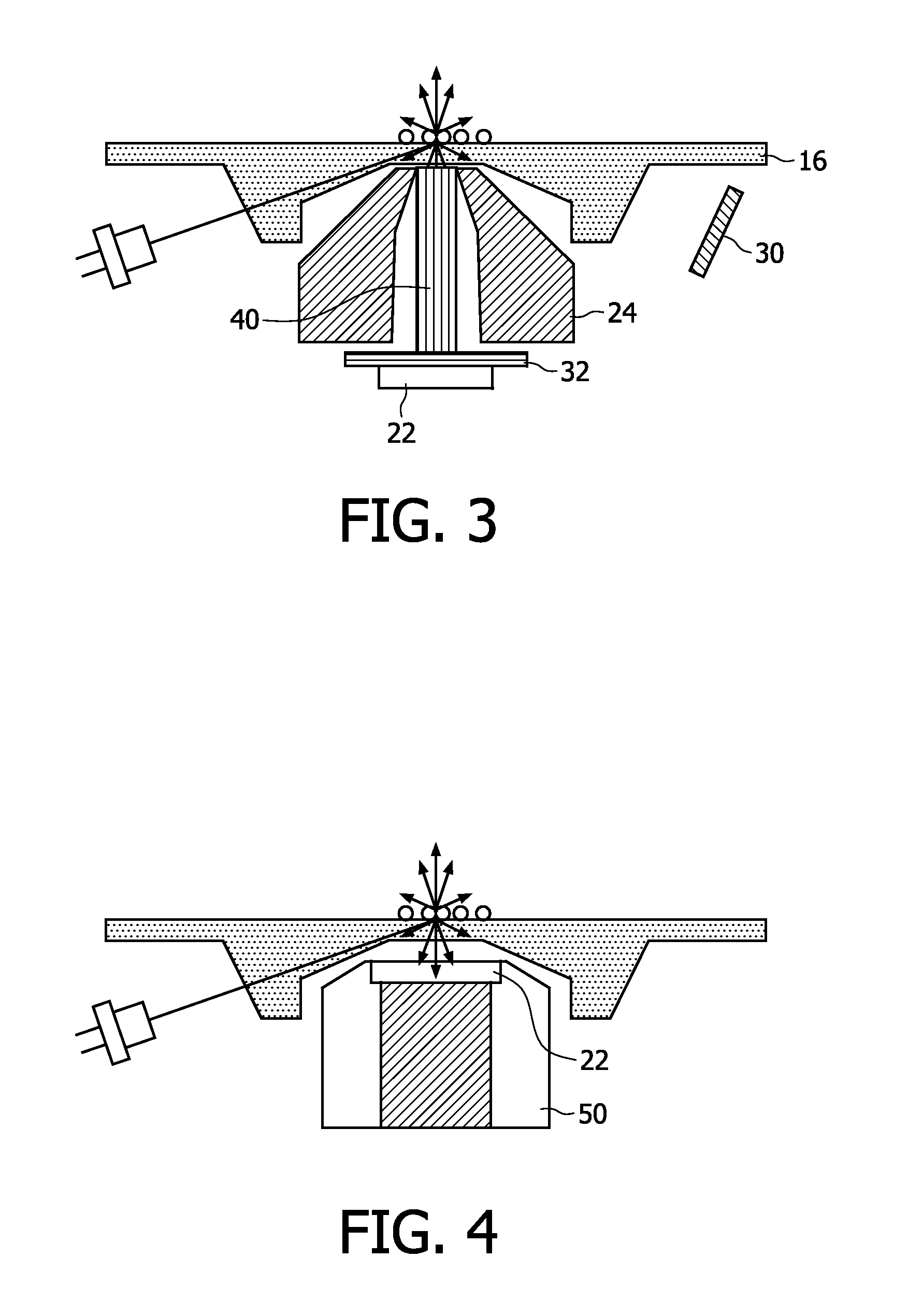Detection system and method
a detection system and detection method technology, applied in the field of diagnostics, can solve the problems of constructive limitation of the combination of improved optical readout and magnetic actuation, and achieve the effects of simple low-cost magnetic system, enhanced surface specificity, and enhanced detection sensitivity
- Summary
- Abstract
- Description
- Claims
- Application Information
AI Technical Summary
Benefits of technology
Problems solved by technology
Method used
Image
Examples
second embodiment
[0052]In a second embodiment shown in FIG. 3, the emitted light is transported from the analysis region by a light guide 40, for example fibre bundles. The detector 22 is placed at the lower end of the light guide 40 outside the magnetic head. This enables a more compact design of the magnetic field guides and allows the use of standard components for the optical elements.
third embodiment
[0053]In a third embodiment shown in FIG. 4, the photodetector 22 is positioned directly on top of the magnet 50 that is used for actuation of the magnetic labels. The photodetector 22 is still however located in the reader instrument to keep costs of the disposable part of the apparatus low. FIG. 4 shows a flat underside of the substrate in the analysis region, but an optical component such as a single refractive or diffractive lens, or a 1D- or 2D-lenslet array (providing imaging functionality), could again be moulded in the bottom of the optical substrate to increase the collection efficiency, as shown in FIG. 2.
[0054]To keep the photodetector slim, it is preferably a semiconductor element (e.g. photodiode, CCD, CMOS) or a polymeric element.
[0055]Excitation by total internal reflection as shown in the examples above can be replaced by excitation with an evanescent light guide, as shown in FIG. 5. In this way, no components are required at the location of the analysis region for c...
PUM
 Login to View More
Login to View More Abstract
Description
Claims
Application Information
 Login to View More
Login to View More - R&D
- Intellectual Property
- Life Sciences
- Materials
- Tech Scout
- Unparalleled Data Quality
- Higher Quality Content
- 60% Fewer Hallucinations
Browse by: Latest US Patents, China's latest patents, Technical Efficacy Thesaurus, Application Domain, Technology Topic, Popular Technical Reports.
© 2025 PatSnap. All rights reserved.Legal|Privacy policy|Modern Slavery Act Transparency Statement|Sitemap|About US| Contact US: help@patsnap.com



